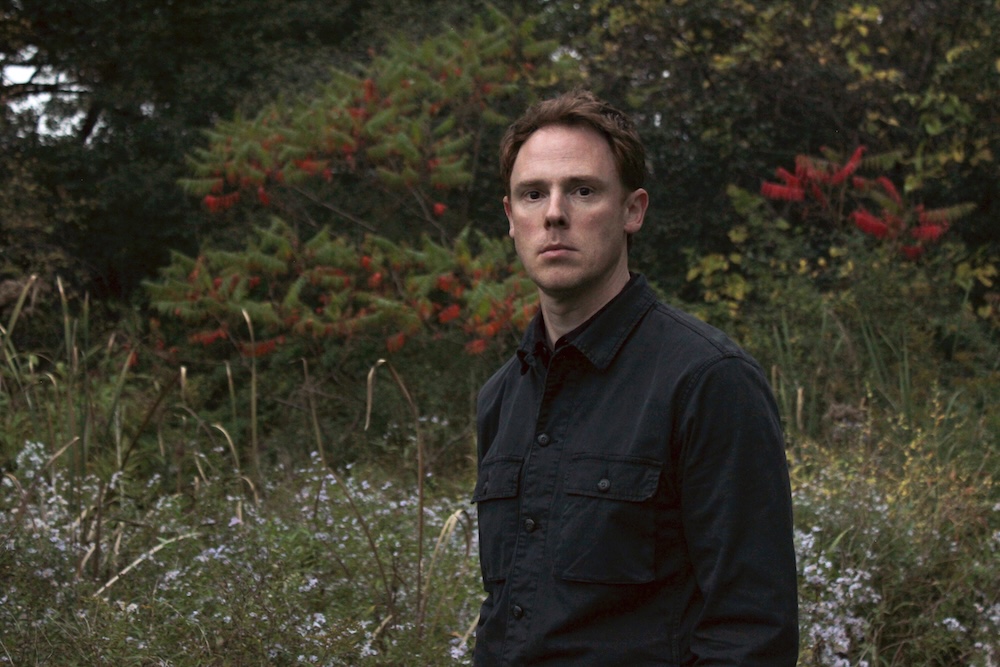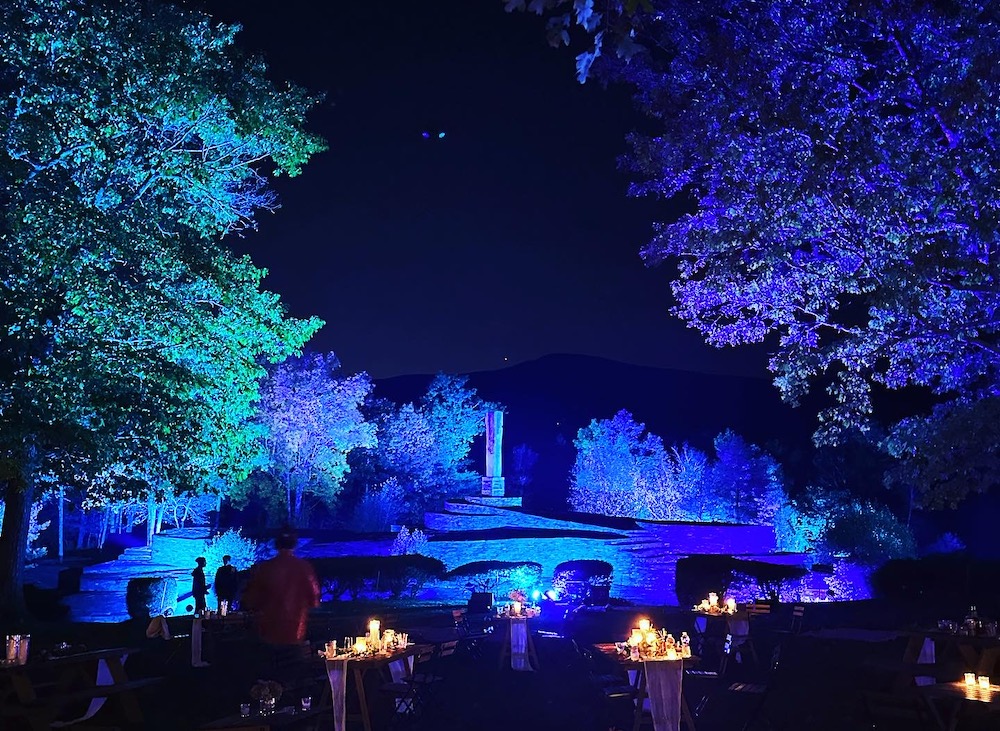
Sacred Stones: The Mystery of Catskill’s Ancient Cairns
It is a clear morning, and the wind is whipping as I ascend a forested hill a couple of miles east of downtown Woodstock. I am in the company of Glenn Kreisberg, a radio frequency engineer turned amateur archaeologist, and we are on the trail of a mystery.
Known as Lewis Hollow, the 38-acre ravine on the southern slope of Overlook Mountain is dotted throughout with rock structures that Kreisberg contends were put there by Native Americans and their ancestors. The structures are clearly man-made, and whoever put them here worked hard on their construction, with the larger ones measuring up to 100 feet long and at least four feet high.
Kreisberg, who was born and raised locally, first heard about the site in the mid-2000s. In his role as a radio engineer, he found himself attending a public hearing about a plan to situate a cell phone tower on the site. At the hearing, regulators dismissed the stone structures as stone walls built by colonial-era farmers, “just as something that was done ubiquitously throughout the Northeast,” says Kreisberg.

But some of those attending the hearings disputed these claims, insisting that the site had pre-Columbian roots. Kreisberg was intrigued and, after visiting the site several times, also became convinced that the stones were not only put there deliberately by indigenous cultures but that they had a specific ceremonial purpose.
His fascination grew, and in the years since then, he has expanded his search, identifying dozens more of what he calls “ceremonial stone landscapes” throughout the Catskills region, summarizing his findings in a book, Spirits in Stone: The Secrets of Megalithic America.
At the same time, he started a non-profit, the Overlook Mountain Center, to provide education through guided walks. In Kreisberg’s estimation, these sites represent an indigenous heritage that has been white-washed from the official history books, and in a bid to reverse this process, the center was recently able to purchase the Lewis Hollow site, ensuring its long-term preservation.
“Native Americans and tribal historic preservation groups absolutely confirm that there were stone constructions aligned to events on the horizon that were part of their belief system, part of their spiritual practices,” says Kreisberg.
Kreisberg believes that whatever ceremonial purpose the Lewis Hollow site served, it was likely connected to astronomy, pointing to the resemblance between the site’s layout and the Draco constellation in the northern sky. A similar theory exists in relation to the Great Serpent Mound, the snake-shaped prehistoric effigy mound found in Ohio believed to be at least 2,000 years old.



Theories like these fall under the category of archaeoastronomy, a field of research that was once dismissed as a pseudo-science but which has gained more mainstream acceptance in recent years. Even so, archaeoastronomy continues to be controversial, and the theories of some of its leading advocates, like the British writer Graham Hancock (who wrote the foreword to Kreisberg’s book), are seen as heretical by the scientific mainstream. Kreisberg, too, has fallen foul of the gatekeepers of archaeological orthodoxy.
In an interview with the local Times-Union newspaper, SUNY New Paltz associate anthropology professor Joseph Diamond called Kreisberg’s theories “nonsensical,” adding that there was “absolutely no evidence” that the Lenape, the indigenous tribe local to this region, ever used stone for construction.
For his part, Diamond believes the stone formations were built by Irish laborers in the late 19th century. He also questions the validity of a University of Washington-led effort to date the site using a technique known as optically stimulated luminescence, which found that the structures were likely built around 1550, well before European settlement of the region.
According to Kreisberg, Diamond’s views reflect a long-standing prejudice against the idea that indigenous cultures were far more accomplished than we have given them credit for.
“I always cite a survey done as part of the 1880 US census, where they documented over 250,000 miles of stone walls in the Northeast. That’s enough walls to reach the moon. In that 200-year colonial period from 1680 to 1880, when Europeans were arriving, there just weren’t enough people to build that amount of stonework. Some of it must have been there already.”


The past, as they say, is a foreign country, and whether you believe Kreisberg is a pied piper-like figure leading us into a cul-de-sac of speculative pseudo-science, or a pioneer willing to push past the blind spots of modern-day archaeology, definitive proof for either viewpoint is unlikely to materialize anytime soon.
In the meantime, I suppose, we have our gut to go on and (the sometimes unreliable) evidence of our eyes. In Kreisberg’s defense, I grew up in the UK, where dry stone walls are a ubiquitous feature of the rural landscape, and in all my years of hiking the English countryside, I don’t recall ever seeing stone constructions like those Kreisberg showed me.
The idea that European farmers or laborers would build stone formations on the scale of those at Lewis Hollow – the eight largest cairns measure between 60-100 feet – doesn’t seem to me like an adequate explanation for what I witnessed. The other thing that lends credibility to his ideas is Kreisberg himself, who is mild-mannered and thoughtful, with none of the self-certainty of the zealot, and unlike Hancock, who can sometimes come across as embittered, seems unfazed by the criticism of his ideas by the mainstream.
Adding weight to Kreisberg’s claims is a mounting body of evidence across the United States of stone structures similar to the ones found at Lewis Hollow. In Alabama, for example, anthropologists have identified more than 300 stone structures believed to be Native American in origin. Meanwhile, a luminescence analysis of a stone complex found in the woods of Pennsylvania’s Lancaster County in 2021 dated the site to 570 BC. As with Lewis Hollow, the Lancaster County site features cairns and stone walls side by side, suggesting to Kreisberg that the stone features were “built at the same time under the same belief system.”
The mainstream reluctance to take seriously that Northeastern indigenous cultures built and maintained ceremonial stone structures also flies in the face of some of the accounts of the early colonists. Reverent Ezra Stiles, one of the first presidents of Yale, wrote in the mid-1700s about an ongoing custom among native tribes in Massachusetts to place stones and pieces of wood on cairns, noting that “the Indians continue the custom to this day, tho’ they are a little ashamed the English should see them.”

“I call it a convenient untruth,“ says Kreisberg. “For them to recognize that Native Americans had this civilization here prior to them arriving and were expressing it in the woods through these ceremonial sites hindered their ambitions to develop the land for their own purposes.”
In a bid to redress the balance, Kreisberg has been inviting local indigenous groups, such as the Ramapough Lenape Turtle Clan of New Jersey, to hold ceremonies at the site. “One of the big purposes of these sites is to educate,“ he says. “There are many layers to what people can gain from these sites and the Native American belief system connected to them.”
For Kreisberg, the ongoing mystery of these stone landscapes is something that has “added a layer of meaning and purpose to his life.“ He says: “You tend to become obsessed with wanting to understand it to the greatest extent possible, even though it may not ever be possible to understand it completely.”
+ + +
Photos courtesy of Glenn Kreisberg | Spruceton Site drawing by Dale Saltzman
Write a Comment
You must be logged in to post a comment.









